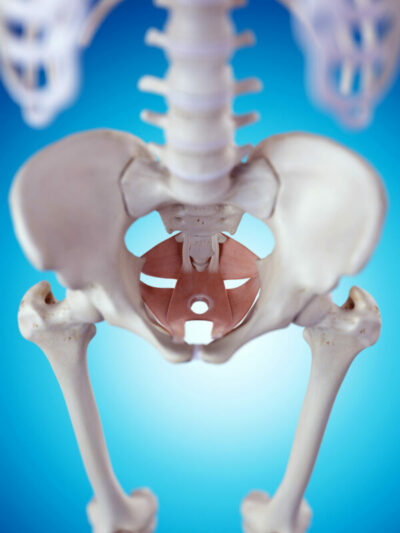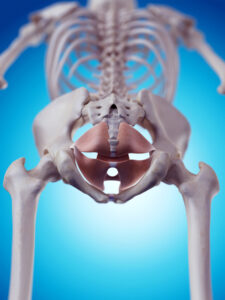
Have you ever experienced genital pain, perineal pain, or pain in the rectal area? Initially, you may have thought the pain was due to an infection or a sexually transmitted disease. However—after being tested—your results came back negative and you’re still experiencing the pain.
Here at Rebalance Physical Therapy, our clinicians have over 20 years of experience specializing in pelvic floor physical therapy and treating pelvic floor dysfunction. If you’re still suffering from genital, perineal, or rectal pain, and you have tested negative for STDs and infections, your pain is probably due to dysfunction with your pelvic floor muscles.
The pelvic floor muscles are a group of muscles that sit within the pelvis and surround the structures within the pelvis.
The pelvic floor muscles even line the underside of the pelvis—also known as the perineal area. Because of the unique placement and distribution of the pelvic floor, well-functioning muscles are vital for daily activities and pain-free living. Unfortunately, it’s not uncommon for many health care providers to disregard the pelvic floor or not fully understand how they affect bodily function. The reality is that tight or dysfunctioning pelvic floor muscles can cause a multitude of problems.

Perineal pain, genital pain, bladder symptoms, gastrointestinal issues, and colorectal issues can all be related to dysfunctioning pelvic floor muscles. When pelvic floor muscles become tight, they may create referred pain in the structures of the perineum. Tight pelvic floor muscles can also affect bowel movements and bladder symptoms, trigger irritable bowel syndrome, cause hip and back pain, and even impair sexual function. For men, tight muscles may manifest as pain with ejaculation and/or pain after intercourse. For women, they may experience pain with intercourse and/or after intercourse. Other symptoms of tight pelvic floor muscles include, for females, pain with inserting tampons or routine gynecological exams; and for men, pain with prostate exams.
Pelvic floor muscles that are tight need to be normalized, improved, and rebalanced in relation to other muscles around the pelvis. The pelvic floor muscles themselves are difficult to stretch in isolation, so other muscles, such as the back, hip, and abdominals, are stretched to relax and release the pelvic floor. A qualified pelvic floor physical therapist can help release muscles in and around the pelvic floor, and also show you methods to maintain a relaxed pelvic floor. When the pelvic floor and their surrounding muscles are restored to balance, pain in the perineum and genitals, pain with sitting, bladder issues, and many of the aforementioned symptoms you thought were from an infection or an STD, are alleviated.
The easiest and most direct way to find relief for your pain is to visit Rebalance Physical Therapy in-person if you live in or around Philadelphia, PA! If you’re not near Philadelphia, we also offer Telehealth consultations. These consults are a way for a Rebalance Physical Therapist to personalize your treatment and give you recommendations and referrals to treat your pelvic floor dysfunction.
If you are unable to travel and want to work on your own schedule, we’ve developed a 4-5 hour at-home program to help rebalance the pelvis and reduce tension in the pelvic floor muscles. We created our Pelvic Pain Program based on our own therapist’s experience so we know, first-hand, what works and what doesn’t. Over 200 people have enrolled in our Pelvic Pain Program so far and have seen great progress in reducing or even eliminating their pain! We have a Male Pelvic Pain Course and a Female Pelvic Pain Course.
We at Rebalance Physical Therapy understand that genital, perineal, and overall pelvic pain and symptoms can be confusing and distressing—especially if you think your pain is from an infection but your test results came back negative. We hope this article reduced your stress about your pain (remember: stress magnifies muscle tension!) and helps you feel confident in your healing and recovery.
In-Person and Online Consultations


